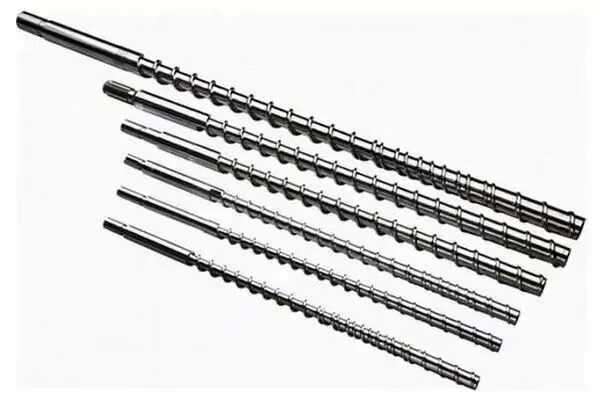 English
English 简体中文
简体中文  Español
Español  Português
Português  русский
русский  Français
Français  日本語
日本語  Deutsch
Deutsch  tiếng Việt
tiếng Việt  Italiano
Italiano  Nederlands
Nederlands  ภาษาไทย
ภาษาไทย  Polski
Polski  한국어
한국어  Svenska
Svenska  magyar
magyar  Malay
Malay  বাংলা ভাষার
বাংলা ভাষার  Dansk
Dansk  Suomi
Suomi  हिन्दी
हिन्दी  Pilipino
Pilipino  Türkçe
Türkçe  Gaeilge
Gaeilge  العربية
العربية  Indonesia
Indonesia  Norsk
Norsk  تمل
تمل  český
český  ελληνικά
ελληνικά  український
український  Javanese
Javanese  فارسی
فارسی  தமிழ்
தமிழ்  తెలుగు
తెలుగు  नेपाली
नेपाली  Burmese
Burmese  български
български  ລາວ
ລາວ  Latine
Latine  Қазақша
Қазақша  Euskal
Euskal  Azərbaycan
Azərbaycan  Slovenský jazyk
Slovenský jazyk  Македонски
Македонски  Lietuvos
Lietuvos  Eesti Keel
Eesti Keel  Română
Română  Slovenski
Slovenski  मराठी
मराठी
Choosing the Right Screw L/D Ratio: Finding the Balance Point Between Quality and Cost
2025-10-31
Ningbo Fangli Technology Co., Ltd. is a mechanical equipment manufacturer has over 30 years’ experiences of plastic pipe extrusion equipment, new environmental protection and new materials equipment. Since its establishment Fangli has been developed based on user’s demands. Through continuous improvement, independent R&D on the core technology and digestion & absorption of advanced technology and other means, we have developed PVC pipe extrusion line, PP-R pipe extrusion line, PE water supply / gas pipe extrusion line, which was recommended by the Chinese Ministry of Construction to replace imported products. We have gained the title of “First-class Brand in Zhejiang Province”.
In the modified plastics production process, the screw length-to-diameter ratio (L/D) is a crucial parameter. It directly affects plasticization quality, production efficiency, and the performance of the final product. Understanding the intricacies of the screw L/D ratio can help us make more precise decisions in daily production.

I.What is the Screw L/D Ratio?
The screw L/D ratio refers to the ratio of the effective working length of the screw to its diameter, usually expressed as L/D, where L represents the effective length of the screw flight section, and D represents the screw diameter.
The magnitude of the L/D ratio directly relates to the material's residence time in the screw, plasticization quality, and mixing effect. A larger L/D ratio provides reasonable temperature distribution, which is beneficial for plastic mixing and plasticization. At this time, the plastic is heated in the barrel for a longer duration, leading to more thorough and uniform plasticization, thereby improving plasticization quality.
II. L/D Ratio Selection for Different Modified Plastics?
Different plastic materials have varying requirements for the screw L/D ratio due to differences in their physical properties and processing characteristics:
Thermosensitive Plastics: Such as rigid PVC and other plastics with poor thermal stability, generally select an L/D ratio of 17-18 to prevent decomposition caused by excessive residence time.
General-Purpose Plastics: Common plastics like PE and PP typically select an L/D ratio of 18-22.
High-Temperature Stable Plastics: Engineering plastics such as PC and POM can select an L/D ratio of 22-24.
Flame-Retardant Polypropylene: When processing flame-retardant PP, the screw L/D ratio should be controlled as much as possible between 36:1 and 40:1.
Nylon PA: For injection molding, it is recommended to select an abrupt transition screw with an L/D ratio of 18-20.
Glass Fiber Reinforced Materials: For glass fiber reinforced thermoplastic resin composites, an L/D ratio range of 48:1 to 56:1 can be selected to improve the distribution uniformity of glass fibers in the resin.
III. The Synergistic Effect of L/D Ratio with Other Screw Parameters
The screw L/D ratio does not function independently; it needs to work in synergy with other screw parameters to achieve the best processing results for modified plastics:
Compression Ratio: The compression ratio is the ratio of the depth of the last flight in the feed section to the depth of the first flight in the metering section. Different plastics require different compression ratios. For example, Nylon PA for injection molding generally selects a compression ratio of 3-3.5, while Polypropylene requires 3.7-4.
Screw Sections: The screw can be divided functionally into the feed section, plasticating section (compression section), and metering section (homogenizing section). The allocation of the lengths of these three sections significantly impacts material plasticization quality. For non-crystalline plastics, the plasticating section length is generally 45%-50% of the total flight length; for crystalline plastics, it is (3-5)D; for Nylon, it is (1-2)D.
Screw Type: Gradual transition screws have a longer compression section, accounting for 50% of the total screw length, resulting in gentler energy conversion during plasticization. They are mostly used for plastics with poor thermal stability like PVC. Abrupt transition screws have a shorter compression section, accounting for 5%-15% of the total screw length, resulting in more intense energy conversion during plasticization. They are mostly used for crystalline plastics like Polyolefins and PA.
IV. L/D Ratio Selection for Twin-Screw Extruders
In modified plastics production, twin-screw extruders are more commonly used equipment, and their L/D ratio selection differs from single-screw extruders:
The L/D ratio of commercial twin-screw extruders is mostly between 21-48. For processing heat-sensitive materials, pelletized materials, and products without high-quality requirements (such as waste recycling and pelletizing), selecting a smaller L/D ratio is recommended. Large L/D ratios from 39 to 48 are more suitable for materials requiring higher temperatures, pressures, and product quality.
In recent years, twin-screw extruders with ultra-large L/D ratios (exceeding 100) have also begun to be applied in specific fields. For example, the co-rotating twin-screw extruder with an L/D ratio of 136 developed by Professor Wang Jian's research group at Beijing University of Chemical Technology has been successfully applied in the gel spinning of Ultra-High Molecular Weight Polyethylene (UHMWPE), demonstrating significant advantages in polymer chain disentanglement.
V. Selection Principles in Practice
In the practical application of modified plastics production, selecting the screw L/D ratio should follow these principles:
Select based on material characteristics: Plastics with poor thermal stability should use a smaller L/D ratio, while plastics with good thermal stability can use a larger L/D ratio.
Select based on product requirements: When product quality requirements are not very high (e.g., recycling and pelletizing of waste materials), a smaller screw L/D ratio can be selected. Otherwise, a larger screw L/D ratio should be chosen.
Select based on raw material form: For pelletized materials, which have undergone plasticization and pelletizing, the screw L/D ratio can be selected smaller. For powdered materials that have not been plasticized and pelletized, a larger screw L/D ratio is required.
Consider comprehensive production costs. Although a larger L/D ratio may improve product quality, it also increases equipment costs and energy consumption. It is necessary to find a balance point between product quality and cost.
If you need more information, Ningbo Fangli Technology Co., Ltd. welcomes you to contact for a detailed inquiry, we will provide you with professional technical guidance or equipment procurement suggestions.



